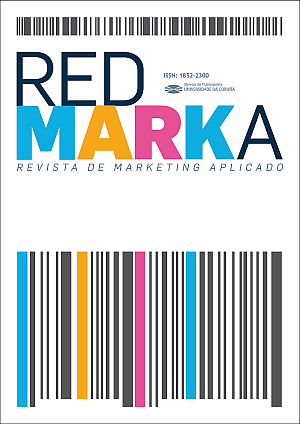Online communities for the digital inclusion of students with deafness
Main Article Content
Abstract
Online communities exist in different contexts of education, where access and use of web tools is also growing. Search in this article fit this potential for learning communities that include students with deafness, and identify key characteristics that they must not only have to promote the educational success of this group of pupils with special educational needs, but also the highest quality of participation parental leave. It appears that the increasing availability of multimedia content is a facilitator of a particular form for deaf students, who have the video and image formats preferred access to information. Online communities through the dissemination of specific information on deafness, access to content covered in the classroom without restrictions of time and space, and sharing of needs and experiences in school and family can contribute to greater parental involvement and the school-family approach.
Keywords:
Downloads
Article Details
References
Archbold, S., Sach, T., O'neill, C., Lutman, M., & Gregory, S. (2008). Outcomes from cochlear implantation for child and family: parental perspectives. Deafness & Education International, 10 (3), 120-142.
Asberg, K. K., Vogel, J. J., & Bowers, C. A. (2008). Exploring correlates and predictors of stress in parents of children who are deaf: implications of perceived social support and mode of communication. Journal of Child and Family Studies, 17 (4), 486-499. DOI: https://doi.org/10.1007/s10826-007-9169-7
Barak, A., & Sadovsky, Y. (2008). Internet use and personal empowerment of hearing-impaired adolescents. Computers in Human Behavior, 24 (5), 1802-1815.
Becta. (2003). What the research says about ICT supporting special educational needs (SEN) and inclusion. ICT Research. Retirado de www.becta.org.uk/research/ictrn
Becta. (2005a). How to use ICT to support the inclusion of the deaf child. Retirado de http://schools.becta.org.uk
Becta. (2005b). Using ICT to support the inclusion of deaf pupils in mainstream schools. Include ICT. Retirado de http://foi.becta.org.uk/content_files/corporate/resources/foi/archived_publications/include_ict_see_hear.pdf
Becta. (2008). Exploiting ICT to improve parental engagement, moving towards online reporting - framework guide. Retirado de http://publications.becta.org.uk/display.cfm?resID=39669
Carvalho, P. V. (2007). Breve história dos surdos no mundo e em Portugal. Lisboa: SurdUniverso.
Castells, M. (2000). The information age: economy, society and culture (2nd ed. Vol. III). Cambridge: Blackwell.
Coenen, T. (2005). How social software and rich computer mediated communication may influence creativity. Artículo presentado en International Association for Development of the Information Society (IADIS) International Conference on Web Based Communities, Algarve, Portugal.
Dalzell, J., Nelson, H., Haigh, C., Williams, A., & Monti, P. (2007). Involving families who have deaf children using a family needs survey: a multiagency perspective. Child: care, health and development, 33 (5), 576-585.
Forest Lake Elementary School. (2010). Forest Lake Elementary School - Connecting through technology, retirado em 10/2010, de http://www.richland2.org/schools/fle.
Grant, L. (2009). Learning in families: A review of research evidence and the current landscape of learning in families with digital technologies. General Educators Report. Bristol: Futurelab.
Hintermair, M. (2006). Parental resources, parental stress, and socioemotional development of deaf nad hard of hearing children. Journal of Deaf Studies and Deaf Education, 11 (4), 493-513. DOI: https://doi.org/10.1093/deafed/enl005
Hyde, M., Punch, R., & Komesaroff, L. (2010). Coming to a decision about cochlear implantation: parents making choices for their deaf children. Journal of Deaf Studies and Deaf Education, 15 (2), 162.
Jackson, C. W., Wegner, J. R., & Turnbull, A. P. (2010). Family quality of life following early identification of deafness. Language, Speech and Hearing Services in Schools, American Speech-Language-Hearing Associations, 41, 194-205. DOI: https://doi.org/10.1044/0161-1461(2009/07-0093)
Lewin, C., & Luckin, R. (2010). Technology to support parental engagement in elementary education: lessons learned from the UK. Computers & Education, 54 (3), 749-758.
Pedrosa, N. (2002, 26/6/2009). A internet e a deficiência auditiva. Intervir. Retirado em 07/2011, de http://www.intervir.net
Power, D., & Power, M. R. (2009). Communication and culture: signing deaf people online in Europe. Technology and Disability, 21 (4), 127-134.
Prospect House School. (2010b). Prospect House School. Retirado em 10/2010, de http://www.prospecths.org.uk.
Redecker, C. (2009). Review of learning 2.0 practices: study on the impact of web 2.0 innovations on education and training in Europe. Luxembourg: European Comission, Joint Research Centre, Institute for Prospective Technological Studies.
Rudd, T., Gyfford, C., Morrison, J., & Facer, K. (2006). What if reimagining learning spaces. Bristol: Futurelab.
The Grays School Media Arts College. (2010b). The Grays School Media Arts College. Retirado em 10/2010, de http://www.thegrays.thurrock.sch.uk.
Watson, L. M., Hardie, T., Archbold, S. M., & Wheeler, A. (2008). Parents' views on changing communication after cochlear implantation. Journal of Deaf Studies and Deaf Education, 13 (1), 104-116.
Wenger, E., McDermott, R. A., & Snyder, W. (2002). Cultivating communities of practice: A guide to managing knowledge. Boston: Harvard Business Press.
Zaidman-Zait, A. (2007). Parenting a child with a cochlear implant: A critical incident study. Journal of Deaf Studies and Deaf Education, 12 (2), 221-241.
Zaidman-Zait, A., & Jamieson, J. R. (2004). Searching for cochlear implant information on the internet maze: Implications for parents and professionals. Journal of Deaf Studies and Deaf Education, 9 (4), 413-421.






